
Replica Ships from Spain, the Nina, Pinta and Santa Maria. Celebrating
La Santa María de la Inmaculada Concepción ( Spanish for: The Holy Mary of the Immaculate Conception ), or La Santa María, originally La Gallega, was the largest of the three ships used by Christopher Columbus in his first voyage across the Atlantic Ocean in 1492. Her master and owner was Juan de la Cosa . History

Lost, or Destroyed? Exploring the Final Fate of the Famous
The Pinta Even less is known about the Pinta 's final whereabouts. As the middle child of the three ships, she was neither liked nor disliked by Columbus. The 60-foot vessel would accompany Columbus on his first voyage as the fastest of the trio. Returning to Spain after the mission, she vanished, slipping between the cracks of history.

nina pinta santa maria Google Search History Pinterest Ship
'Christopher Columbus on Santa Maria in 1492' (1855) by Emanuel Leutze. (Public Domain) In 2014, a team of researchers believed that they discovered the wreck of Santa Maria off the coast of Haiti. The discovery became a hot topic for the media, but some researchers quickly retorted that it's impossible to find this ship in such a location.

Nina, Pinta and Santa Maria Christopher columbus, Sailing, Columbus
The Santa Maria ran aground in 1492, just months after Columbus landed. But what happened to the other two ships Columbus sailed to the New World, the Niña and the Pinta? Little is known about.
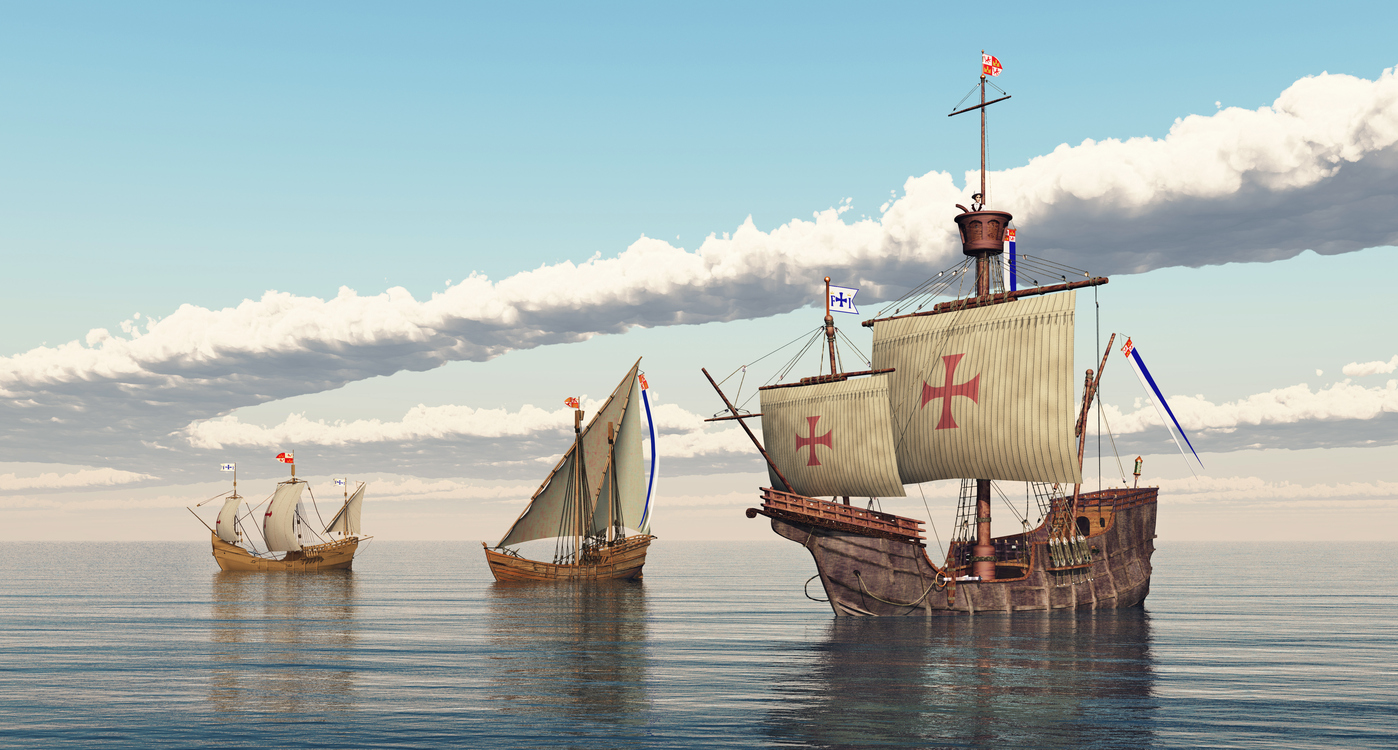
Santa Maria, Nina and Pinta of Christopher Columbus The Scholarly Kitchen
The Nina, The Pinta, The Santa Maria Add 'em up - a-one, two, three-uh Sailin' high - Sailin' low - See Columbus go, go, go. The Santa Maria had three masts A slow, large ship - not too fast The Pinta was of medium size It was smaller and faster - my, oh my (repeat chorus) The Nina was the smallest ship It was fastest of all, that's pretty hip
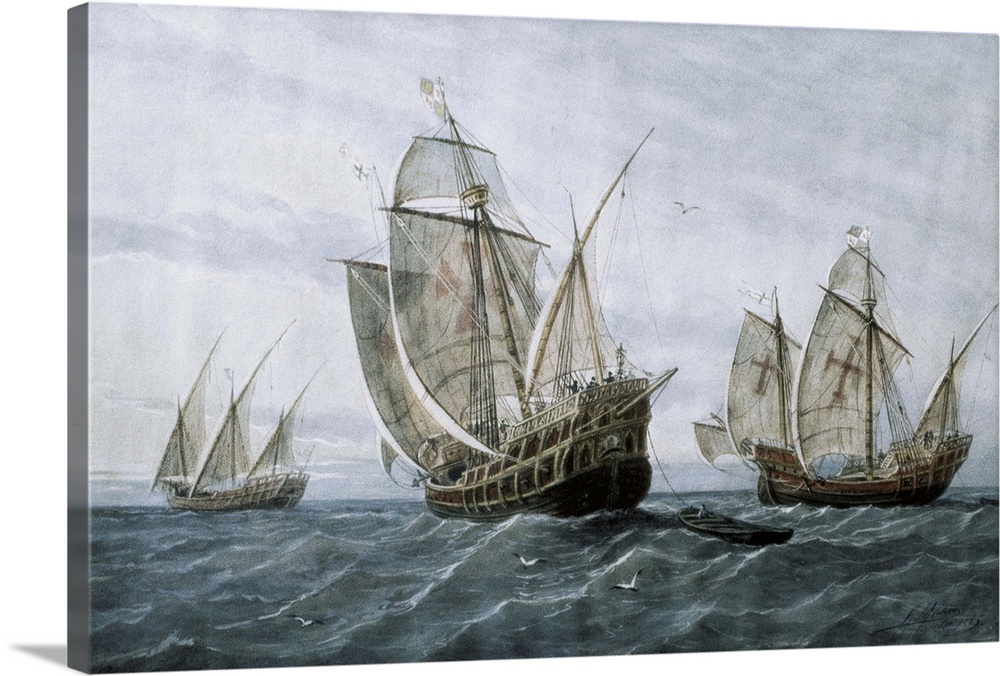
Discovery of America (1492) Pinta, Nina and the Santa Maria Wall Art
The ships of Christopher Columbus's First Fleet—the flagship Santa Maria flanked by Niña and Pinta —are depicted in this undated woodcut. Only the fate of Santa Maria is known. Photograph.

La Niña, la Pinta y la Santa María
The three ships of the first voyage to the New World - the Niña, the Santa Maria and the Pinta. Everyone knows the names of the three ships that sailed on Christopher Columbus' maiden voyage to the New World - the Niña, Pinta and Santa Maria. Few realize that only the Santa Maria was the true name of the three ships.

Nina/Pinta/Santa Maria Corpus Christi, Texas Corpus christi, Nina
Columbus's Ships Were the Niña, Pinta and the Santa Maria Columbus Thought He Had Discovered a New Continent Columbus Was a Genocidal Murderer Columbus Was a Respected and Beloved Leader 1. Columbus Set Out to Prove the World Was Round
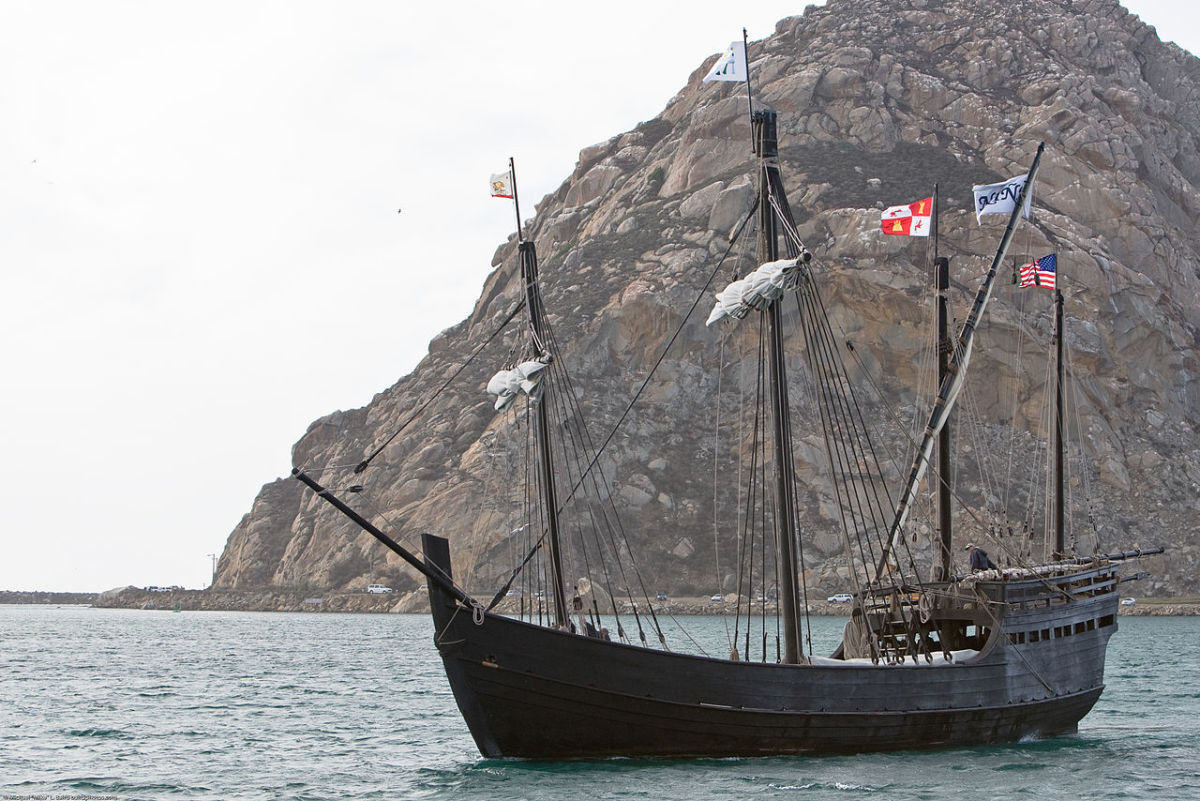
Whatever Happened to the Niña, Pinta, or Santa Maria? Owlcation
Niña, like Pinta and Santa María, was a smaller trade ship built to sail the Mediterranean sea, not the open ocean.
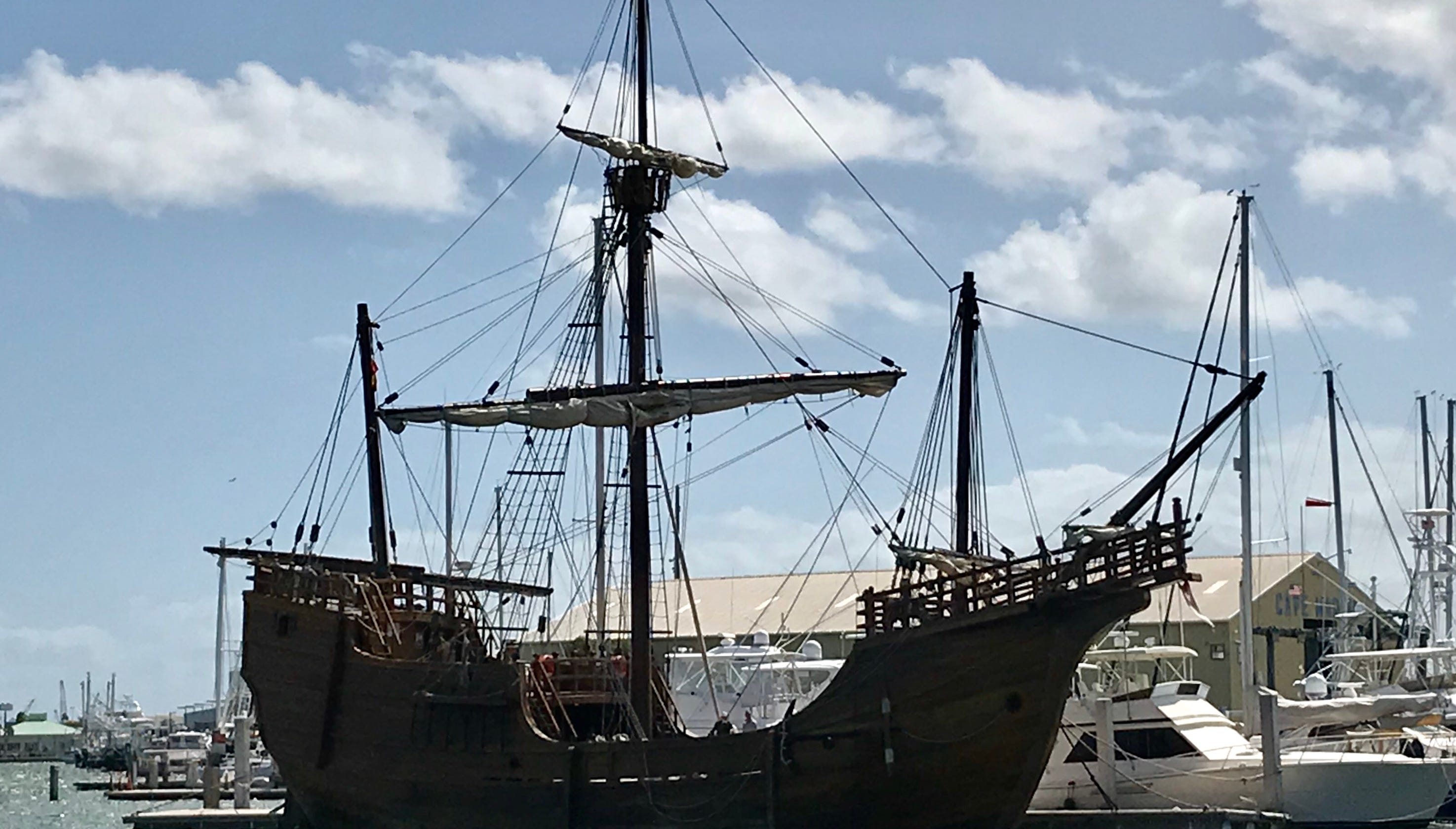
Santa Maria replica at Port; Nina, Pinta heading to Vero Beach
Columbus's log, which might be expected to answer the question, has been lost for centuries. An "abstract" made by a 16th-century Spanish friar is thought to be a fairly accurate copy of the key.
New York Harbor Prints Nina Pinta Santa Maria1992
Santa María (also known as the Gallega) was the largest, of a type known as a carrack ( carraca in Spanish), or by the Portuguese term nau. La Niña and La Pinta were smaller. They were called caravels, a name then given to the smallest three-masted vessels.

File1893 Nina Pinta Santa Maria replicas.jpg Wikipedia
The original Niña, Pinta, and Santa Maria used by Christopher Columbus on his first voyage across the Atlantic were common trading vessels. The Santa Maria which Columbus never liked, ran aground and sank on Christmas Eve 1492 in Hispaniola (now Cap Haitien). She was a Nao, a type of cargo vessel. The Niña and Pinta were Caravels which were used by explorers during the Age of Discovery.

The Nina, the Pinta, the Santa Maria replicas Old sailing ships
On August 3, 1492, Christopher Columbus and his crew set sail from the port of Palos in southern Spain on three vessels: la Santa Clara (Niña), la Pinta and la Santa Gallega (Santa.

Niña, Pinta, and the Santa María Santa Maria, Inca, Sailing Ships
The Niña was driven to seek harbour at Santa Maria in the Azores, where Columbus led a pilgrimage of thanksgiving to the shrine of the Virgin; however, hostile Portuguese authorities temporarily imprisoned the group. After securing their freedom Columbus sailed on, stormbound, and the damaged ship limped to port in Lisbon.
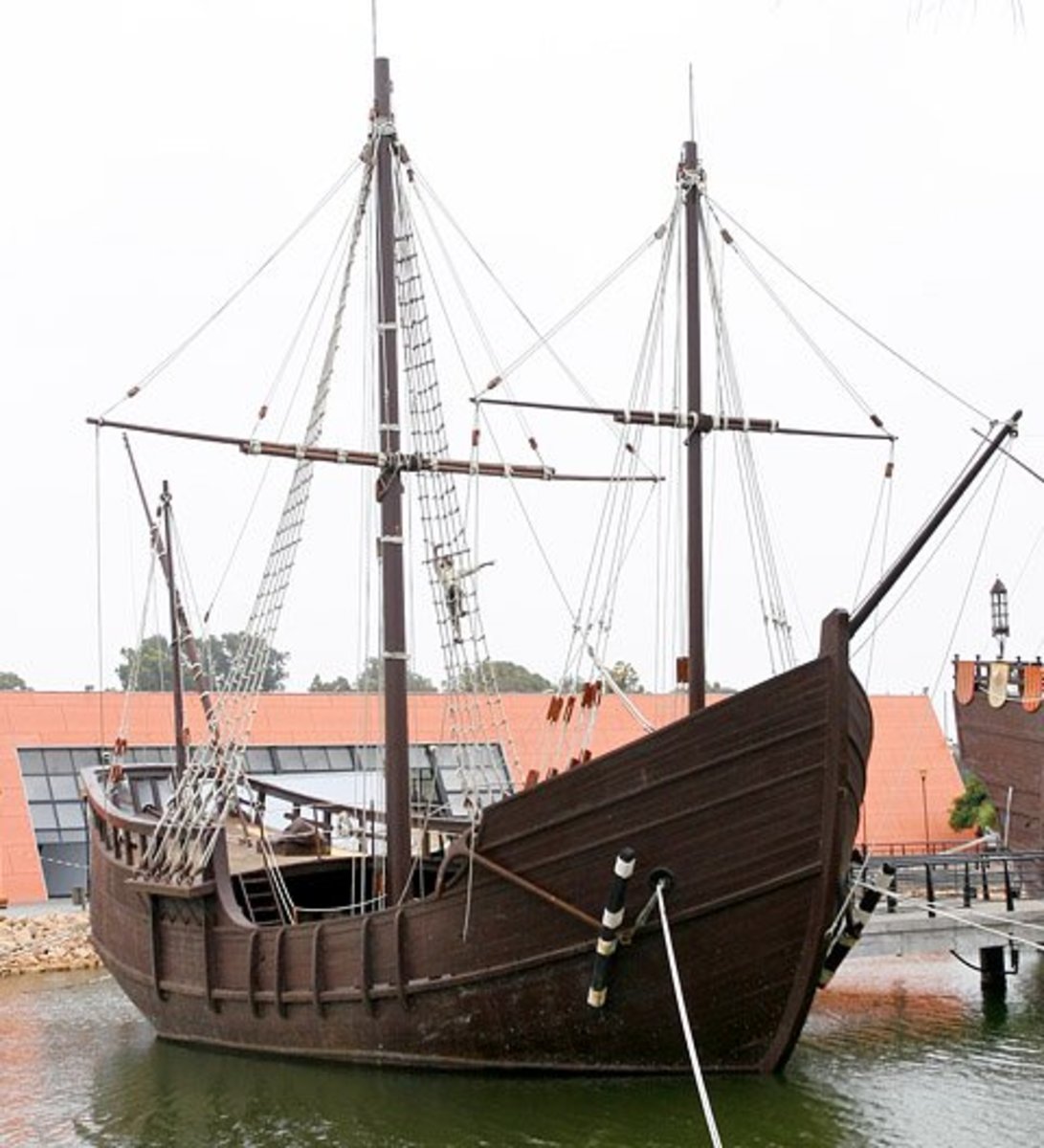
Whatever Happened to the Niña, Pinta, or Santa Maria? Owlcation
Voyages of Christopher Columbus Between 1492 and 1504, Italian explorer Christopher Columbus, under the Catholic Monarchs of Spain, led four Spanish transatlantic maritime expeditions of discovery to the Caribbean, and to Central and South America. These voyages led to the widespread knowledge of the New World.

La Niña, la Pinta y la Santa María
Christopher Columbus had three ships on his first voyage, the Niña, the Pinta, and the Santa Maria. Columbus sailed from Palos de la Frontera on 3 August, 1492. His flagship, the Santa Maria had 52 men aboard while his other two ships, the Nina and Pinta were each crewed by 18 men. The Santa Maria was a nao, was a bit of a tub, and was not.